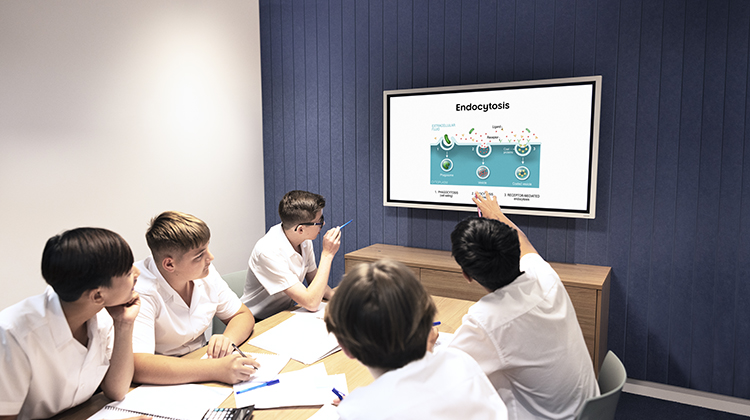How Edtech Helps Schools Improve Learning Outcomes Amid Teacher Shortages

Australia’s education sector has experienced lots of change in recent years. As educator shortages reach critical levels and teaching graduate numbers fall significantly, administrators, principals and other teachers are under immense pressure to maintain and improve outcomes.
While addressing these issues is complex, many schools are investing in education technology (edtech) to help lighten the load. Recent research from leading education resource supplier Campion shows nearly 40 per cent of Aussie schools are looking to accelerate their technology strategy and become highly tech enabled in the short to medium term.
Schools across the country have already ramped up investment in edtech, although there is still significant growth potential. Schools should aspire to create full digital learning ecosystems that foster collaboration, enhance interaction and improve learning accessibility, whether students are at home or in the classroom.
Taking Tech Adoption to the Next Level
While COVID-19 catalysed a digital evolution in classrooms around the world and here in Australia, investment focused on at-home and remote learning. This broke a lot of ground, but it’s just one piece of the puzzle.
Hybrid ways of learning require a cohesive digital experience, bringing the interactivity of home learning into the classroom. Building toward this philosophy requires careful consideration of the right technology investments, not just adding new tech for the sake of it.
Students learn best when they can collaborate and engage with their peers and teachers, and having access to the right technology not only enables, but enhances that experience to create an engaging learning environment.
Students require interactive tools in the classroom that extend ‘work from anywhere’ principles into the classroom. School leaders must look for tools that provide consistent functionality for both in-person and remote learning, with collaborative features that provide hands-on experiences through a digital medium. They should also offer integration with leading learning platforms that schools are already using.
Which Technologies Make the Most Difference?
Technology has enormous potential to make lives easier for the country’s educator community. Tools like Learning Management Systems, digital textbooks and internet-enabled interactive displays help create rich digital education experiences, especially when implemented as part of a carefully considered digital transformation strategy.
Schools must consider how various tools work together to create a holistic learning workflow. Solutions like touchscreen whiteboards extend digital learning capabilities into classrooms, allowing educators to develop cohesive curriculums for both at-home and in-person learning.
This is critical for remote schools that have invested in at-home learning to improve outcomes for more students. Samsung, in partnership with Social Ventures Australia, recently worked with three primary schools in regional Victoria’s Lang Lang catchment to help students build STEM capabilities with the Flip Interactive Pro digital whiteboard.
The tech has significantly transformed the schools’ learning environment. It allows teachers to easily display workbook pages and annotate them digitally and visually, giving students the opportunity to annotate their work in front of classes, encouraging greater collaboration. It also helps students who are struggling with their learning, providing content in dynamic ways to keep them engaged.
Teachers have seamlessly incorporated the Flip into lesson plans, allowing a more consistent learning experience at home and in the classroom. Content and documentation from previous lessons is saved on screens, allowing teachers to easily pick up where they left off.
As the Lang Lang catchment is a remote community that shares resources amongst three schools, this functionality allows teachers to more easily collaborate with each other.
An Innovative Future for Aussie Schools
As many Australian schools battle teacher shortages in the coming years, technology will be a critical enabler that helps teachers continue to drive great student outcomes. The future of K–12 education will incorporate the right technologies to create a cohesive curriculum that encourages digital learning and in-person collaboration.
The continued push by governments and institutions towards integrating tech into education is a testament to its value. Digital tools are no longer ‘nice-to-have’ accessories; they’re essential components of a brighter future in our classrooms.
It’s critical that schools invest in easy-to-use tools that encourage and enable students to learn and remain engaged, both inside and outside the classroom. Teachers must be open to adopting new tools and experiment with how educational solutions can integrate with the existing curriculum.
This willingness to try new things will be key as edtech grows increasingly sophisticated and offers more opportunities for students across the country.